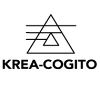INDEPETRO
Iran
Distributor


INDEPETRO
Iran
Polyethylene (Polythene) is one of the world’s most popular plastics. It is an enormously versatile polymer which is suited to a wide range of applications from heavy-duty damp proof membrane for new buildings to light, flexible bags and films. Two major types of PE are in use in the films and flexible packaging sector – LDPE (Low Density) used generally for trays and heavier duty film such as long-life bags and sacks, poly tunnels, protective sheeting, food bags etc and HDPE (High Density) which is used for most thin gauge carrier bags, fresh produce bags and some bottles and caps.
Request for a quote
INDEPETRO
Iran
Polyvinyl Chloride (PVC) is one of the most widely used polymers in the world. Due to its versatile nature, PVC is used extensively across a broad range of industrial, technical and everyday applications including widespread use in building, transport, packaging, electrical/electronic and healthcare applications. PVC has excellent electrical insulation properties, making it ideal for cabling applications. Its good impact strength and weatherproof attributes make it ideal for construction products like Window and door profiles, Pipes and fittings, Power, data and telecoms wiring and cables, Ducting, etc. Also it is a very durable and long lasting material which can be used in a variety of applications, either rigid or flexible, white or black and a wide range of colors in between.
Request for a quote
INDEPETRO
Iran
Transparency, excellent toughness, thermal stability and a very good dimensional stability make Polycarbonate (PC) one of the most widely used engineering thermoplastics. Compact discs, riot shields, vandal proof glazing, baby feeding bottles, electrical components, safety helmets and headlamp lenses are all typical applications for PC. Polycarbonate is most commonly formed with the reaction of bis-phenol A (produced through the condensation of phenol with acetone under acidic conditions) with carbonyl chloride in an interfacial process. PC falls into the polyester family of plastics. Polycarbonate remains one of the fastest growing engineering plastics as new applications are defined; global demand for PC exceeds 1.5 million tons. Polycarbonate is available in a number of different grades dependent on the application and chosen processing method.
Request for a quote
INDEPETRO
Iran
Sodium hydroxide, otherwise called Caustic Soda, is an inorganic compound with chemical formula NaOH. It is called caustic soda because it is highly corrosive in nature. It is available in many forms in the industry, and the most common forms are caustic soda flakes and caustic soda pearls. This product has several industrial applications but it is highly reactive, so it has to be used carefully lest, it can cause skin irritation. Caustic Soda is a strong base with a wide range of applications in different industries. Worldwide, the major users of caustic soda are the aluminum industry, pulp & paper and the chemical industry. The main applications are water treatment and water purification, as cleaning agent, or a wide range of uses in chemical industry like starch production or for the desulphurization in the petrochemical industry.
Request for a quote
INDEPETRO
Iran
Epoxy Resins are reactive intermediates used to produce a versatile class of thermosetting polymers. They are characterized by the presence of a three-membered cyclic ether group commonly referred to as an epoxy group, 1,2-epoxide, or oxirane. The most widely used epoxy resins are diglycidyl ethers of bisphenol A derived from bisphenol A and epichlorohydrin. The outstanding performance characteristics of the thermosets derived from bisphenol A epoxies are largely conveyed by the bisphenol A moiety (toughness, rigidity, and elevated temperature performance), the ether linkages (chemical resistance), and the hydroxyl and epoxy groups (adhesive agents). In addition to bisphenol A, other starting materials such as aliphatic glycols and both phenol and o-cresol novolacs are used to produce specialty resins.
Request for a quote
INDEPETRO
Iran
Hydrochloric Acid is a corrosive, strong mineral acid with many industrial uses. A colorless, highly pungent solution of hydrogen chloride (HCl) in water, when it reacts with an organic base it forms a hydrochloride salt. With major production starting in the Industrial Revolution, hydrochloric acid is used in the chemical industry as a chemical reagent in the large-scale production of vinyl chloride for PVC plastic, and MDI/TDI for polyurethane. It has numerous smaller-scale applications, including household cleaning, production of gelatin and other food additives, descaling, and leather processing. About 20 million tonnes of hydrochloric acid are produced worldwide annually. It is also found naturally in gastric acid.
Request for a quote
INDEPETRO
Iran
Diisocyanates are a family of chemical building blocks mainly used to make polyurethane products, such as rigid and flexible foams, coatings, adhesives, sealants and elastomers. Many of the products we rely upon every day are safer and more comfortable through the use of polyurethanes made possible by diisocyanates. Polyurethane chemistry is complex, but the basics are relatively easy to understand. Polyurethanes are produced by combining diisocyanates with polyols and other chemical additives. Because a variety of diisocyanates and a wide range of polyols can be used to produce polyurethane and the speed of the reaction can be adjusted, a broad spectrum of materials can be produced to meet specific application needs. Diisocyanates are important in the production of countless products, particularly in the transportation and construction industries. TDI is used primarily in the production of flexible foams.
Request for a quote
INDEPETRO
Iran
Toluene is a liquid chemical compound utilized in the manufacturing of many commercial products, including paints and glues. Colorless and insoluble in water, toluene can be dangerous when its fumes are inhaled, causing neurological damage and intoxication. Because of this, toluene is sometimes abused as an inhalant drug. Individuals who use paints and thinners frequently, like those who work with such products professionally, wear face masks in order to minimize the inhalation of toluene. Beyond its uses, however, toluene’s chemical structure is quite interesting of its own accord. Toluene demand growth in Europe is expected to be positive but low at a rate less than GDP. Demand will get a fillip in 2009 following the start-up of ExxonMobil’s new TDP unit in Rotterdam, the Netherlands.
Request for a quote
INDEPETRO
Iran
Xylenes are produced with different processes. When in refineries, oil cuts enter the reforming units, aromatic compounds comprise a great proportion of the outflow material. Separating this flow into its components, accounts for more than 70 percent of global xylene supply. Also in the steam cracking process in olefin units, some quantity of Mixed Xylene is produced. In addition, disproportioning Toluene into Benzene and Xylene and treating Pyrolysis Gasoline are also different ways to produce Mixed Xylene. Mixed xylenes are the second-most-important aromatic product in terms of world consumption for chemical manufacture, ranking behind benzene and ahead of toluene. Mixed xylenes refers to the equilibrium mixture of four isomers with the same C8H10 chemical formula. The isomers in order of natural occurrence are meta-xylene, ortho-xylene, para-xylene, and ethyl-benzene.
Request for a quoteeuropages also recommends
A selection of companies related to the activity:
A selection of products that might interest you

VERHAGEN CONSULTING
Belgium
Assisting Companies in the United Kingdom by setting up a distribution hub inside the European Union with the aim of simplifying the distribution of the orders to and from their EU customers. The Service: I offer from a central service point a re-routing service, re-labelling the parcels arriving from the UK and forwarding these with the correct documents to the customers in the European Union, so there is no need for every company to have their own warehouse in the European Union. And take care of VAT reporting, local duties and taxes.
Request for a quote
VERHAGEN CONSULTING
Belgium
Assisting Companies in the United Kingdom by setting up a distribution hub inside the European Union with the aim of simplifying the distribution of the orders to and from their EU customers. The Service: I offer from a central service point a re-routing service, re-labelling the parcels arriving from the UK and forwarding these with the correct documents to the customers in the European Union, so there is no need for every company to have their own warehouse in the European Union. And take care of VAT reporting, local duties and taxes.
Request for a quote
VERHAGEN CONSULTING
Belgium
Assisting Companies in the United Kingdom by setting up a distribution hub inside the European Union with the aim of simplifying the distribution of the orders to and from their EU customers. The Service: I offer from a central service point a re-routing service, re-labelling the parcels arriving from the UK and forwarding these with the correct documents to the customers in the European Union, so there is no need for every company to have their own warehouse in the European Union. And take care of VAT reporting, local duties and taxes.
Request for a quote
VERHAGEN CONSULTING
Belgium
Assisting Companies in the United Kingdom by setting up a distribution hub inside the European Union with the aim of simplifying the distribution of the orders to and from their EU customers. The Service: I offer from a central service point a re-routing service, re-labelling the parcels arriving from the UK and forwarding these with the correct documents to the customers in the European Union, so there is no need for every company to have their own warehouse in the European Union. And take care of VAT reporting, local duties and taxes.
Request for a quoteRequest for quotes
Create one request and get multiple quotes form verified suppliers.
- Only relevant suppliers
- Data privacy compliant
- 100% free



